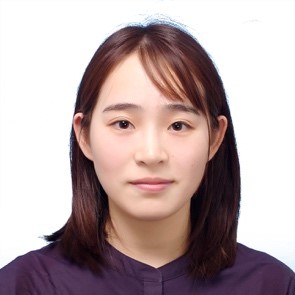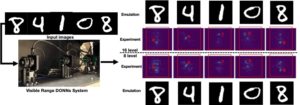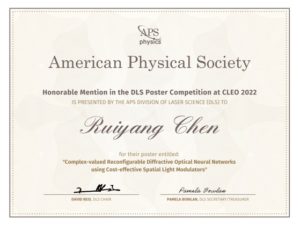
 University of Utah electrical and computer engineering Ph.D. students Ruiyang Chen (left) and Yingjie Li (right), advised by ECE assistant professors Cunxi Yu and Weilu Gao, recently published their work “Physics-Aware Machine Learning and Adversarial Attack in Complex-Valued Reconfigurable Diffractive All-Optical Neural Network” in Laser and Photonics Reviews (LPR), and have an additional paper “Physics-aware Differentiable Discrete Codesign for Diffractive Optical Neural Networks” accepted to be presented at the International Conference on Computer-Aided Design (ICCAD 2022).
University of Utah electrical and computer engineering Ph.D. students Ruiyang Chen (left) and Yingjie Li (right), advised by ECE assistant professors Cunxi Yu and Weilu Gao, recently published their work “Physics-Aware Machine Learning and Adversarial Attack in Complex-Valued Reconfigurable Diffractive All-Optical Neural Network” in Laser and Photonics Reviews (LPR), and have an additional paper “Physics-aware Differentiable Discrete Codesign for Diffractive Optical Neural Networks” accepted to be presented at the International Conference on Computer-Aided Design (ICCAD 2022).
The past half-decade has seen unprecedented growth in machine learning through the use of deep neural networks (DNNs). Use of DNNs indicates very high-level operations in many applications such as autonomous driving and natural language processing. Unfortunately, conventional computing platforms such as CPUs and GPUs have generated a significant carbon footprint due to the substantial computations required for training and deploying DNNs in real-world applications. In a recent study, researchers have estimated that training a large deep-learning model produces 626,000 pounds of planet-warming carbon dioxide – equal to the lifetime emissions of five cars. As models grow bigger, their demand for computing increases, as well as the carbon footprint produced by those computations.
To counter the planet-warming effect from the computing side, ECE research groups aim to improve energy efficiency in deploying DNN algorithms using natural light. This will allow the computations to be performed at the speed of light while also significantly lowering the carbon footprint in comparison to conventional processors.
“Diffractive optical neural networks – one type of optical neural network built based on light diffraction - is a promising research area in optical systems for low power consumption machine learning accelerators,” Li said. “It features high system throughput with low power consumption. However, the approaches to design, train, and deploy the diffractive optical neural network system and a full stack of hardware and software have not been well developed.”

Figure 1 illustrates an example of digit recognition task via all-optical diffractive neural networks.
In their recent works, the students have developed a large-scale, cost-effective, complex-valued, and reconfigurable diffractive all-optical neural networks system. Their contributions in hardware system and software development have significantly streamlined the design and deployment process of diffractive optical neural networks. This research is a huge step in applying diffractive optical neural networks in real-world application scenarios to significantly reduce the computational carbon footprint.
 DLS Honorable Mention
DLS Honorable Mention
Ruiyang Chen presented a poster of this research at the APS Division of Laser Science (DLS) poster competition held at CLEO this past May. After submitting the original paper to the conference, he was invited to present a poster on the work for the competition. Out of 180 total participants, Chen was one of six competitors to receive an honorable mention for his poster. To view the poster, click here.
Chen and Li’s full paper can be accessed here, and Li’s invited talk of this work at the 2022 Design Automation Conference can be watched here.